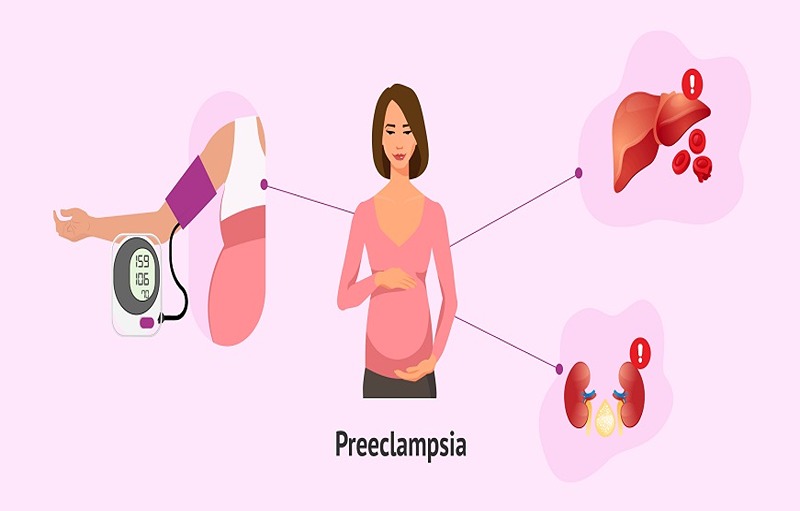
 Author :
Dr. Sheikh Jeelani
/
BNYS | FTECH
Author :
Dr. Sheikh Jeelani
/
BNYS | FTECH
While it is true that preeclampsia is most common in pregnant women, in cases like Sarah's it can happen after a woman has given birth.
"Preeclampsia typically develops after the 20th week of pregnancy. However, it can also develop after a woman delivers and is discharged from the hospital," says Sindhu Srinivas, MD, MSCE, director of Obstetrical Services at the Hospital of the University of Pennsylvania.
The exact cause of preeclampsia is unknown and includes several factors. Components that can play a role in developing preeclampsia include immune system issues, insufficient blood flow to the uterus, damage to the blood vessels, and genetic factors.
"Preeclampsia and related disorders are most often characterized by the presence of a sudden rise in blood pressure. This can lead to seizure, stroke, multiple organ failure, and death of the mother and/or baby," Dr. Srinivas warns.
Preeclampsia Symptoms
Preeclampsia affects five to eight percent of women and is one of the top causes of maternal mortality. Symptoms can include:
High blood pressure during pregnancy
Blurred vision
Headache
Swelling of the face, hands and feet
Upper abdominal pain
Vomiting
Shortness of breath
HELLP syndrome (a severe form of preeclampsia)
Who is at high risk for preeclampsia?
Knowing the symptoms of preeclampsia is vital, especially for women at higher risk for the disorder. Women who have chronic hypertension, have had preeclampsia in previous pregnancies, or have certain medical conditions, such as lupus, are at increased risk for developing preeclampsia.
"Women at risk should consult with a maternal-fetal medicine specialist before conceiving to better understand her risk and how to optimize the pregnancy for the best outcome," says Dr. Srinivas.
"Even if the condition is mild, it can affect the baby's growth and the mother," she says. "If the condition is stable, we may only need to monitor and test during pregnancy. But if a woman's condition worsens or is severe, the only cure for preeclampsia is to deliver the baby."